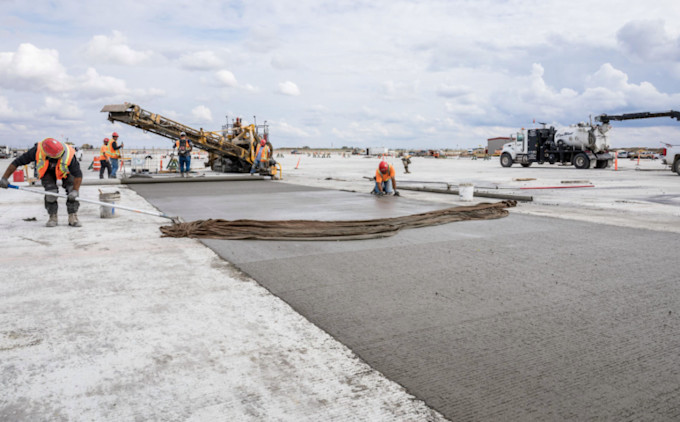Isabella O'Malley
Digital Reporter, Environmental Scientist
Thursday, August 27th 2020, 6:00 am - A Canadian cleantech company is fighting climate change by capturing carbon dioxide from a plentiful and perhaps obvious resource - the air we breathe.
Concrete’s omnipresence is undeniable and roughly 70 per cent of the world’s population lives in a structure that contains this material. Most of our built environment, including homes, schools, hospitals and buildings, was created with concrete because of its strength and relatively cheap cost. It is also incredibly versatile, which is why it is the second most widely used substance on Earth after water.
This use has come at a cost.
The concrete industry is one of the biggest sources of greenhouse gas emissions globally and generates the most carbon dioxide (CO2) emissions per dollar of revenue. Approximately 8 per cent of humanity’s carbon footprint comes from concrete and the only sources of greenhouse gases that are higher come from coal, oil and gas.
Most of the greenhouse gas emissions from concrete come from manufacturing cement, which is concrete’s primary ingredient. Limestone and clay are heated to 1,400°C to start the calcination process, which releases 50 per cent of concrete’s carbon emissions. The fossil fuels that heat the limestone account for 40 per cent and the fuel used for mining and transporting the concrete make up 10 per cent of the carbon emissions.
TRAP THE CARBON INSTEAD
Our reliance on concrete won’t disappear anytime soon, so CarbonCure, a Canadian cleantech company, designed a technology that injects captured CO2 from the air to permanently store it in concrete.
The company sources CO2 from industrial gas suppliers, which is then injected into wet concrete during the mixing process. As the materials are mixed, the CO2 undergoes a mineralization process that converts the gas into nano-sized minerals that strengthen the concrete and reduces the amount of cement needed. This procedure comes without compromising performance.

carboncure concrete Concrete made with CarbonCure technology was used to build the East Deicing Apron at Calgary International Airport in 2019. Credit: CarbonCure
“By using CarbonCure and manufacturing CO2 mineralized concrete, producers reduce the carbon footprint of their concrete by an average of 4-6 per cent,” said CarbonCure during an interview with The Weather Network.
“Every cubic metre of CO2 mineralized produced with CarbonCure reduces carbon emissions by 17 kg; so an average building made with CO2 mineralized concrete would reduce CO2 emissions by approximately 120,000 kg. That's equivalent to the carbon absorbed by 160 acres of forest in a year, or the emissions generated from driving 480,000 km.”
CarbonCure was founded in Halifax, Nova Scotia in 2012 and has since contributed to several large-scale projects using its technology, including the construction of one of its own buildings. Four years after the company formed, the Ambassatours Headquarters was built with 93,900 kg of CO2 that was captured from the air.
Another notable project that saved an impressive 160,000 kg of CO2 is the East Deicing Apron at the Calgary International Airport, which is equivalent to 85 hectares of forest absorbing CO2 in a one year period. The new centralized deicing pad was built in 2019 and involved the second-largest pour of CarbonCure concrete in a single project and the largest quantity to be used at a Canadian airport.
CONCRETE PRODUCTION EXPECTED TO GROW
Experts predict that growth in concrete production will coincide with global urbanization and economic development, which is why sustainable alternatives are needed to lower its exorbitant impact on the climate.
A study conducted by McKinsey & Company found that scaling innovative technologies can help the concrete industry reduce its 2017-level CO2 emissions by over 75 per cent by 2050. The company says that concrete will likely remain the top construction material globally due to the availability of limestone and cement, but the COVID-19 pandemic is providing opportunities for alternative sustainable materials.
“As players address the challenges of uncertain demand, they have an opportunity to reset strategies: identifying the best path toward decarbonization, assessing digital and technological advancements to invest in, and rethinking their products, portfolios, partnerships, and construction methodologies—areas we explore later,” McKinsey & Company states.
“Forward-thinking players could have an opportunity to leapfrog and become the industry front-runners.”
The study concludes that innovative approaches, including new technologies and alternative building materials, will be “indispensable” to achieve carbon reduction targets by 2050.
No comments:
Post a Comment